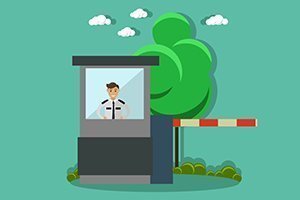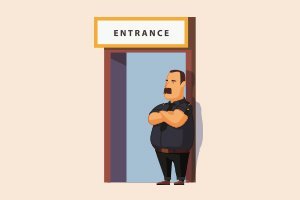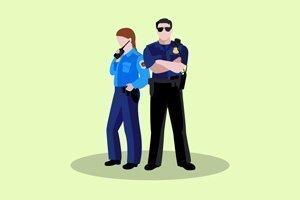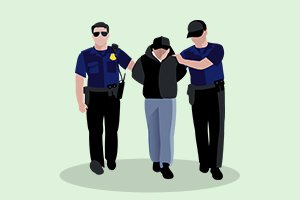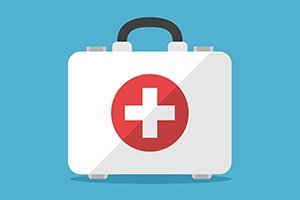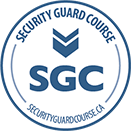Cardiopulmonary resuscitation (CPR) is a method used to save someone when their heartbeat or breathing has stopped. Such examples include when someone has drowned or has had a heart attack. This is done by compressing the chest of a patient at a given rate, typically at around 100 to 120 times a minute. Breathing into their mouth is also a technique used to push air into their lungs.
CPR also helps in keeping oxygenated blood flowing, thus ensuring the brain and other vital organs in the body have a supply of blood before the heartbeat has been restored to normal. This prevents the death of brain cells and other vital parts of the body.
First aid is the care that is given to someone who is suffering from a sudden sickness or injury. It may be as simple as applying plaster to a small cut, or as complicated as helping someone trapped inside a collapsing building. First aid can help in reducing the possibility of a condition from worsening by promoting a quick recovery, or in some cases, saving a life before the patient has reached the hospital.
Knowledge of CPR and first aid is crucial if you are working towards a career in security. Training on how to do CPR and first aid properly should be one to your top priority goals, as it will help keep those around you safe.
Training for First Aid
For first aid training, the first and the most critical measure is to minimize the occurrence of any accidents. This can be done by putting safety measures in place and obeying safety rules. First aid equipment and supplies should be located within reasonable reach. This will ensure that in the event of an accident or sudden illness, the patient can be attended to with ease.
Standard CPR
Standard CPR is the most common CPR training, and it includes breathing into someone’s mouth, also known as mouth-to-mouth resuscitation and chest compressions. Breathing into someone’s mouth forces air with oxygen into their lungs. Compressing keeps the blood circulating after the heart stops pumping the blood. Any interruptions including breathing would mean that the individual has little chances of survival.
This method, when adequately done within the first 5 minutes after the person has collapsed, can increase the person’s chances of survival by more than 50%. This is because oxygenated blood can still flow in the person’s body even before they can get specialized care. However, there is a possibility of fracturing the rib bones of the person while performing CPR.
Bystander CPR
The first aid method can pose complications for someone who is unfamiliar with the patient as they may fear contracting a disease in the process. In such cases, it is what’s commonly referred to as bystander CPR.
Most of the time, a bystander may not understand how to carry out CPR unless they are trained. This also applies to those who know how to carry out the method but are not sure or confident enough to help the patient through. In such cases, they may fear the legal implications around the condition and since they don’t know patients medical history, may tend to stay away.
Regardless, undergoing CPR and first aid training without broadening the required knowledge needed to assist a person in need is counter intuitive.
Improving Work and Home Safety
Knowing how to carry out first aid properly is a critical measure. A person has to be a trained first aid professional to lead a team giving first aid.
First aid and CPR training are also crucial for people who take care of those in need of constant attention. Such people include people with physical or mental disability, people living with chronic illnesses, children, epileptic people or even people working in accident-prone areas such as construction sites where one is working with heavy machinery.
Undergoing training will ensure the safety of such people is assured even in cases where the accidents have occurred.
Spotting Life-Threatening Conditions
Spotting life-threatening conditions can be hard for someone who has not undergone first aid training. Underestimating some of these conditions can be fatal to a victim, especially in the cases where they are unconscious.
In such situations, people often tend to be spectators and hope that someone else will tend to the victim. When you have training, because you can understand how critical the condition is to the victim, you can better help save a life before it’s too late.
Building Your Career
On an economic scale, knowing how to do first aid and CPR can help your job prospects. In any organization, it’s a requirement by law that a person trained in first aid should be present. Having the first aid skills on your CV gives you an upper hand in your workplace. Also, being trained in first aid shows that you possess other skills like compassion, empathy and capable of handling high-stress situations with a sober mind.
It is always better to know first aid and never to use it than to need it and not have it. In cases of emergency, call 911.
To learn more about CPR and first aid training please contact us today.

